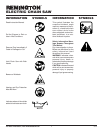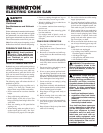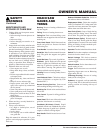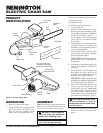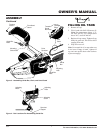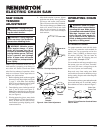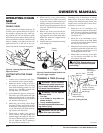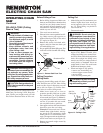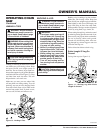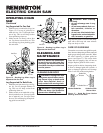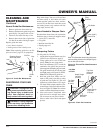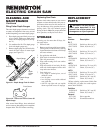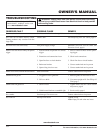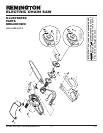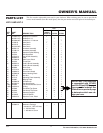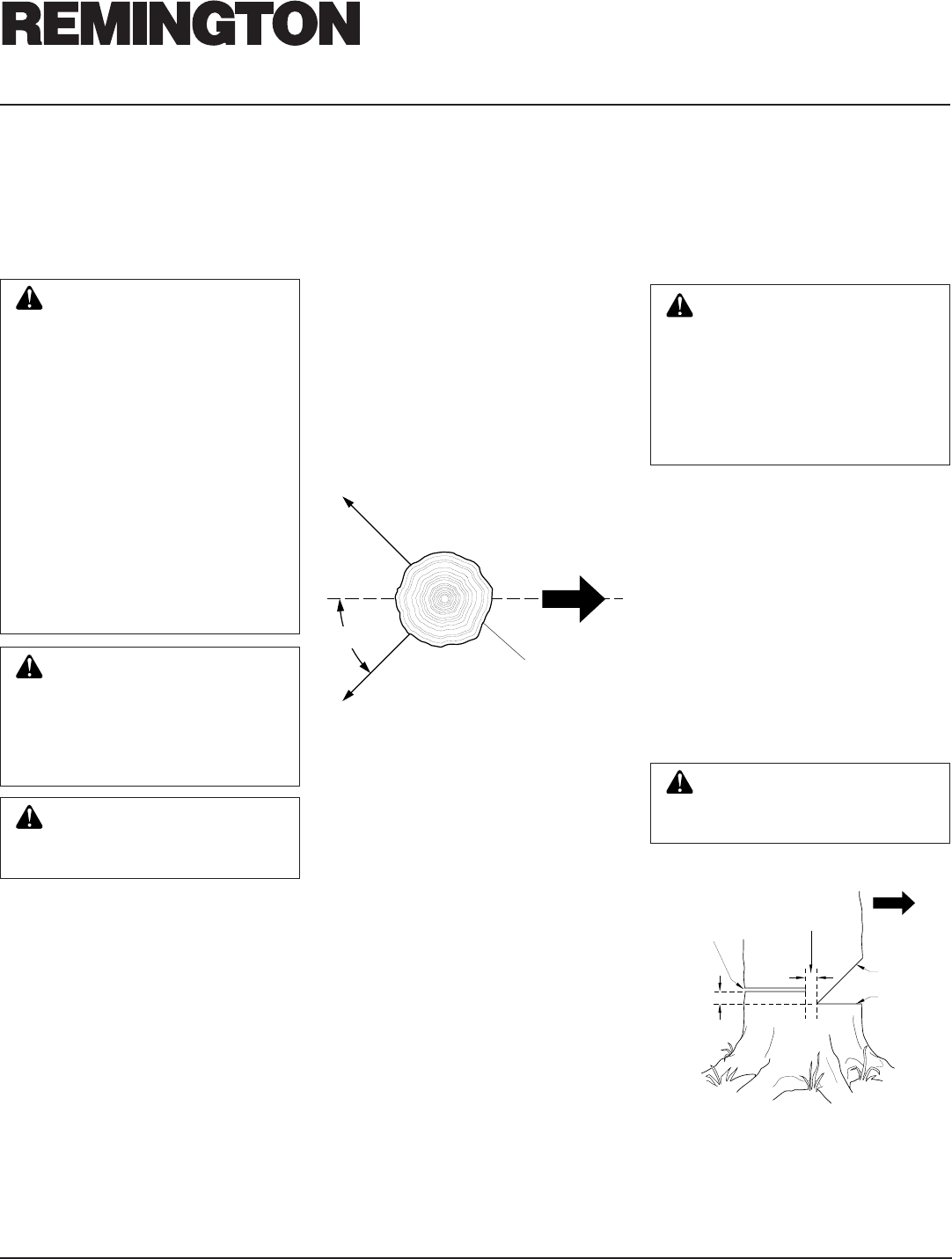
10
105020
ELECTRIC CHAIN SAW
®
For more information, visit www.desatech.com
Felling Cut
1. Make felling cut five centimeters (two
inches) higher than lower notch cut
and on opposite side of tree (see Fig-
ure 12). Keep felling cut parallel to
lower notch cut.
2. Cut towards notch.
Hinge
3rd Cut -
Felling Cut
Direction of
Fall
5 cm
(2 inches)
5 cm
(2 in.)
Figure 12 - Felling A Tree
Direction of Fall
Retreat
Path
45°
Retreat
Path
Tree
Figure 11 - Retreat Path From Tree
Felling Procedure
Felling Notch
A properly placed felling notch will deter-
mine direction tree will fall. Place felling
notch on side of tree in direction you want
tree to fall (see Figure 12). Follow direc-
tions below to create a felling notch.
1. Make lower notch cut as close to
ground as possible. Hold saw so guide
bar is horizontal. Cut 1/3 the diameter
of tree trunk (see Figure 12).
Note:
Al-
ways make this horizontal lower notch
cut first. If you make this cut second,
tree can pinch chain or guide bar.
2. Start upper notch cut the same distance
above first cut as first cut is deep.
Example:
If lower notch cut is 20 cen-
timeters deep (eight inches), start up-
per notch cut 20 centimeters (eight
inches) above it. Cut downward at 45°
angle. The upper notch cut should meet
end of lower notch cut (see Figure 12).
3. Remove tree trunk wedge created by
notching cuts.
OPERATING CHAIN
SAW
Continued
FELLING A TREE (Cutting
Down a Tree)
WARNING:
• Avoid kickback. Kickback can
result in severe injury or death.
See
Kickback,
page 3, to avoid
risk of kickback.
• Do not fell a tree without ample
skill or expert help.
• Keep children, animals, and
bystanders away from area
when felling a tree.
• If two or more persons per-
form bucking and felling op-
erations at the same time, pro-
vide ample distance between
operations. Provide distance
of at least twice the height of
tree being felled.
WARNING: When felling a tree,
be aware of your surroundings. Do
not endanger any person, strike
utility lines, or cause property dam-
age. If tree strikes utility lines, con-
tact utility company at once.
Felling is the process of cutting down a tree.
Make sure your footing is firm. Keep feet
apart. Divide your weight evenly on both
feet. Follow directions below to fell a tree.
CAUTION: Seek professional
help if facing conditions beyond
your ability.
Before Felling a Tree
1. Before felling, inspect tree. Make sure
there are no dead limbs or branches that
may fall on you. Study natural lean of
tree, location of larger branches, and
wind direction. This will help you judge
which way tree will fall.
2. Clear work area around tree.
3. Plan and clear a retreat path before fell-
ing. Make retreat path opposite to
planned direction of fall of tree and at
45° angle (see Figure 11).
4. Remove dirt, stones, loose bark, nails,
staples, and wire from tree where you
will make felling cuts.
5. Stay on uphill side when felling tree. Tree
could roll or slide downhill after falling.
WARNING: Be alert for falling
overhead limbs. Watch your foot-
ing while exiting area.
3. As felling cut nears hinge, tree should
begin to fall.
Note:
If needed, drive
wedges into felling cut to control direc-
tion of fall. If tree settles back and pinches
chain, drive wedges into felling cut to
remove saw. Only use wedges made of
wood, plastic, or aluminum. Never use
wedge made of steel. This could cause
kickback and damage to chain.
4. When tree begins to fall, quickly
•remove saw from felling cut
•release trigger to turn saw off
• put saw down
•exit area using retreat path
WARNING: Do not cut all the
way through tree. Leave about five
centimeters (two inches) of tree
diameter uncut directly behind fell-
ing notch (see Figure 12). This
uncut portion acts as a hinge. The
hinge helps keep tree from twist-
ing and falling in wrong direction.
2nd Cut -
Upper
Notch
Cut
1st Cut -
Lower
Notch
Cut



